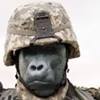

| Visitors Now: | |
| Total Visits: | |
| Total Stories: |

| Story Views | |
| Now: | |
| Last Hour: | |
| Last 24 Hours: | |
| Total: | |
Reckless Pilot crashes B-52 Bomber
Anything and everything anytime
This guy was a disaster waiting to happen. The damn of it is he brought down 3 colleagues with him.
The 1994 Fairchild Air Force Base B-52 crash occurred at Fairchild Air Force Base, Washington, United States, on June 24, 1994, when the pilot of a Boeing B-52 Stratofortress, Arthur “Bud” Holland, flew the aircraft beyond its operational limits and lost control. The aircraft stalled, fell to the ground and exploded, killing Holland and the other three United States Air Force (USAF) crew members on board. The crash was captured on film and was shown repeatedly on news broadcasts throughout the world.
The subsequent investigation concluded that the chain of events leading to the crash was primarily attributable to three factors: Holland’s personality and behavior, USAF leaders’ delayed or inadequate reactions to earlier incidents involving Holland, and the sequence of events during the aircraft’s final flight. The crash is now used in military and civilian aviation environments as a case study in teaching crew resource management. It is also often used by the US armed forces during aviation safety training as an example of the importance of compliance with safety regulations and correcting the behavior of anyone who violates safety procedures.
The accident board stated that Bud Holland’s personality significantly influenced the crash sequence. USAF personnel testified that Holland had developed a reputation as an aggressive pilot who often broke flight safety and other rules. The rule-breaking included flying below minimum clearance altitudes and exceeding bank angle limitations and climb rates.
An earlier incident occurred in 1991 when a B-52 piloted by Holland performed a circle above a softball game in which Holland’s daughter was participating. Beginning at 2,500 feet (760 m) AGL, Holland’s aircraft executed the circle at 65° of bank. Described by one witness as a “death spiral,” the nose of the aircraft continued to drop during the maneuver and the bank angle increased to 80°. After losing 1,000 feet (300 m) of altitude, Holland was able to regain control of the aircraft.
On July 12, 1991, Holland commanded a B-52 for a “flyover” during a change of command ceremony for the 325th Bomb Squadron at Fairchild. During both the practice and the actual flyover, Holland’s aircraft flew at altitudes below 100 feet (30 m) – well below the established minimum altitude – flew steeply banked turns in excess of 45°, exceeded pitch angle limits and executed a wingover. The wingover was not specifically prohibited but was not recommended because it could damage the aircraft. After witnessing the flyover, Colonel Weinman and his deputy commander for operations, Colonel Julich, verbally reprimanded Holland but took no formal action.
2013-03-22 19:35:31
Source: http://markosun.wordpress.com/2013/03/22/reckless-pilot-crashes-b-52-bomber/
Source:






Sir, For one, you cannot defy the law of gravity. Secondly, Newton’s third law of motion: “For every action, there is an equal and opposite reaction”. Thirdly, wannabe Hot Shot “Top Guns” should never be allowed near, nor around B-52′s that cost roughly $127 million per airplane spread out over eight years, not including the loss of life and training of fellow airmen.
That’s seriously F&cked up. What did he think he was going to do, a barrel roll?